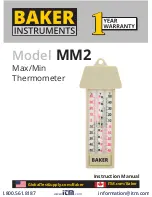
6
Digital Communications Interface
6.1
Overview
External communications allows an external device, such as a computer, to
communicate with the 1560 to obtain measurement data and control operating
conditions. Communication is accomplished with various commands issued to
the 1560 through any of its bi-directional communication ports. This may be
through the RS-232 port, IEEE-488 port, or any other add-on module device
designated as a communications class device.
6.2
Serial Interface
The 1560 includes one RS-232 serial port. It is located underneath the 1560.
Wiring of the interface cable should be as shown in the diagram in Figure 11.
The protocol for RS-232 communications is 8 data bits, 1 stop bit, and no
parity.
The baud rate, duplex mode,
and linefeed option are pro-
grammable. These parame-
ters are accessed using the
SET UP DEVICE
soft-key
in the
MODULE
menu. Se-
lect the SERI 0 device and
press
ENTER
. Use the
lLR
buttons to change
any of the parameters and
press
ENTER.
BAUDRATE
selects the data rate. It must
match the data rate of the
computer or external device.
DUPLEX determines
whether characters are im-
mediately echoed back
(FULL) to the transmitting
device or not (HALF). LINE-
FEED determines whether a
linefeed character is trans-
mitted in addition to the car-
riage return character.
All commands sent to the
1560 through the serial inter-
face must be terminated with
a carriage return or linefeed
character.
63
6 Digital Communications Interface
Overview
Figure 11
RS-232 Cable Wiring
















































